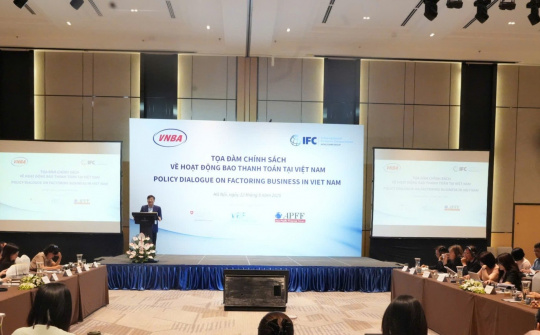Speaking at the opening ceremony of the Seminar, Vice Chairman cum General Secretary of VNBA - Dr. Nguyen Quoc Hung assessed that in the context of the economy having many fluctuations, ensuring credit safety and improving the effectiveness of risk management are increasingly becoming key factors in the operations of credit institutions, especially commercial banks. In parallel, the strong development of technology - especially artificial intelligence (AI), machine learning, and big data analysis (big data) is opening up new opportunities to optimize the credit scoring process, increase the accuracy in risk assessment and thereby improve the quality of credit portfolios.
Mr. Hung said that the banking industry has made significant progress in applying advanced risk management tools, from building an internal credit rating system to implementing Basel II and Basel III standards. The State Bank of Vietnam has also issued many important regulations related to the internal credit rating system, most recently Circular No.31/2024/TT-NHNN dated June 30, 2024 regulating the classification of assets in the operations of commercial banks and non-bank credit institutions, Circular No. 14/2025/TT-NHNN dated June 30, 2025 regulating capital ratios for commercial banks and non-bank credit institutions.
Accordingly, credit institutions must develop an internal credit rating system to rank customers, as a basis for credit approval, credit quality management, and risk provisioning policies appropriate to the scope of operations. Up to now, basically, credit institutions have built and adjusted their internal credit rating models according to their own methodologies and customer file characteristics. However, Mr. Hung frankly acknowledged that these current rating systems still have many limitations and shortcomings.

Dr. Nguyen Quoc Hung - VNBA Secretary General
Firstly, the financial data of many customers has not been publicly disclosed, transparently and clearly (except for public companies), while there are not many connected information data systems for direct verification, important data such as tax data, social insurance data, customs data, telecommunications data, etc. have not been exploited, leading to incomplete and inaccurate scoring and rating results.
Secondly, the internal credit rating systems of some credit institutions only use traditional data, not yet using non-traditional data to rate customers.
Third, currently, each credit institution builds and calibrates its internal credit rating model according to its own methodology and is based mainly on the characteristics of its customers. Therefore, for a customer who has credit transactions at many credit institutions, the credit scoring and rating results at each credit institution may be different and inconsistent; in case of large differences, it may cause negative reactions from customers.
Fourth, CIC and credit information companies currently also have their own internal credit rating system, which charges a fee for use with the scoring and rating results based on a number of criteria on credit transaction history, tax payments, etc., so the results are different from the scoring results of credit institutions, leading to a customer having many different scoring results. If applied to calculate probability of default, calculate capital, etc., there will be different results, easily creating competition between credit institutions.
Fifth, some credit institutions stipulate criteria for scoring and rating customer credit that are not in line with market standards and practices, leading to risks for credit institutions in credit granting activities.
VNBA News




















